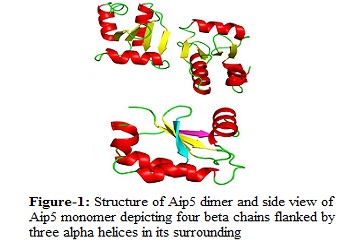Day 1 :
Keynote Forum
Dieter Herlach
German Aerospace Center, Germany
Keynote: Crystal nucleation and growth in undercooled melts of metals and alloys
Time : 09:20-09:50

Biography:
Dieter Herlach as studied Physics at the RWTH Aachen and received Doctoral degree as Dr. rer. nat. at the same university. He became private lecturer upon a Habilitation at the Ruhr-University Bochum RUB. Presently, he is Group Leader at the Institute of Materials Physics in Space and Senior Scientist of the German Aerospace Center, Germany. He is a Full Professor of Physics at RUB. He has authored over 300 scientific publications in refereed journals. He is author and Editor of six books and Co-Editor of Advanced Engineering Materials. He leaded and leads projects of the German Research Foundation, the German Aerospace Center-Space Management, the European Space Agency and was the Principal Investigator of NASA during three spacelab missions. He is an Honorary Professor of three universities and received Chinese Friendship Award in Beijing in 2000 and the Lee Hsun Lecture Award of the Chinese Academy of Sciences in 2007. He has chaired the Division of Metal and Materials Physics of the German Physical Society DPG and was elected as Member of the Council of DPG. He was an elected Member of the General Review Committee of DFG and Deputy Chairman of the German Society of Materials Science and Engineering.
Abstract:
An undercooled melt possesses an enhanced free enthalpy that gives access to crystallize metastable solids. Crystal nucleation selects the crystallographic phase whereas the subsequent crystal growth controls the microstructure evolution. Electromagnetic and electrostatic levitation techniques are very efficient to produce a highly undercooled melt since heterogeneous nucleation on container-walls is avoided. Moreover, a freely suspended drop is accessible for in situ observation of crystallization far away from equilibrium. We combine levitation technique with the diagnostic means of neutron scattering to investigate short range order in undercooled melts and energy dispersive X-ray diffraction of synchrotron radiation to observe phase selection processes upon undercooling. Measurements of the statistics of nucleation undercooling are performed in order to study the physical nature of crystal nucleation. Nucleation is followed by crystal growth. In undercooled melts, the crystal grows with dendritic morphology since a planar interface is destabilized by the negative temperature gradient ahead the solid liquid interface. In highly undercooled melts, dendrites propagate very rapidly. A high speed camera is used to record the advancement of the solidification front. Dendrite growth velocities are measured as a function of undercooling of pure metals, solid solutions and intermetallics. Non-equilibrium crystallization effects are evidenced. Crystal growth is governed by heat and mass transport. To explore the influence of convection on dendrite growth comparative experiments in microgravity are performed using an electromagnetic levitator on board in the International Space Station. Metals show dendritic growth in a mesoscopic scale with a rough interface at the microscopic scale. In case of semiconductors the solidification front is facetted in a mesoscopic scale with a smooth interface in a microscopic scale. The entropy of fusion of the compound Ni2B is located in between that of metals and semiconductors. A transition from dendritic to facetted growth is observed induced by convection in the undercooled drops.
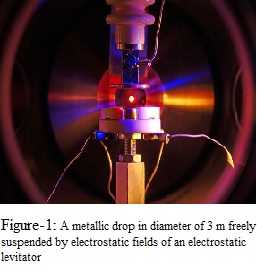
Keynote Forum
Eui-Hyeok Yang
Stevens Institute of Technology, USA
Keynote: Synthesis of 2D flatlands beyond graphene
Time : 09:50-10:20

Biography:
Dr. E. H. Yang is a full professor of Mechanical Engineering Department at Stevens Institute of Technology. He received Ph.D. degrees from Ajou University, Korea. After his postdoctoral training at University of Tokyo and at California Institute of Technology, he joined NASA's Jet Propulsion Laboratory where he became a Senior Member of the Engineering Staff. At JPL, he received a number of awards, including NASA ICB Space Act Awards, Bonus (Level B and C) Awards and a number of Class 1 NASA Tech Brief Awards. In recognition of his excellence in advancing the use of MEMS-based actuators for NASA's space applications, he received the prestigious Lew Allen Award for Excellence at JPL in 2003. His scholarly leadership has been recognized by peers. Examples of these efforts include being appointed as an Associate Editor and/or Editorial Board of several journals including Nature’s Scientific Reports, and being elected as the Division Chair of the ASME MEMS Division. Since joining Stevens in 2006, he has been responsible for obtaining competitive research funding from several federal agencies including NSF, AFOSR, US Army, NRO, NASA and DARPA (including 6 NSF and 3 AFOSR grants, and 5 NASA and 3 NRO contracts). Dr. Yang holds over 12 patents issued or pending. Dr. Yang is the director of the Micro Device Laboratory, a Stevens's multi-user microfabrication facility.
Abstract:
I will present one of our primary research topics, focusing on our development of the chemical vapor deposition (CVD)-growth of 2D materials; we develop a direct growth process to enable localized, patterned, single crystalline or large-scale polycrystalline monolayers of TMDs, including MoS2, WS2, WSe2 and MoSe2, along with their heterostructures. TMDs are emerging graphene analogues with unique properties for optoelectronic applications, but they are prone to rapid oxidation in air, presenting a critical roadblock in practical device applications. In attempts to overcome this issue of TMD oxidation, we study CVD-growth and perform extensive material characterization to illuminate the role of dissimilar 2D substrates in the prevention of interior defects in TMDs, thus uncovering the conditions for anti-oxidation. This research provides a detailed look into the oxidation and anti-oxidation behaviors of TMDs, which corroborates the role of underlying 2D layers in the prevention of interior defects in TMDs. We furthermore show the epitaxial growth of TMDs on hBN and graphene, as well as vertical/lateral heterostructures of TMDs, uniquely forming in-phase 2D heterostructures, and we examine the resulting quality and integrity of differing heterostructure. If the technique could be developed to be highly reliable and high fidelity, it could have a high impact on the future research and commercializability of TMD-based devices.
Keynote Forum
Joseph Orgel
Illinois Institute of Technology, USA
Keynote: X-ray diffraction reveals the mechanical load tolerance of mammalian nerve, muscle and tendon in traumatically induced injury and the vertebrate identity of fossilized T-rex bone
Time : 10:40-11:10

Biography:
Joseph Orgel is a British American Scientist based at the Illinois Institute of Technology with past and present appointments in Biology, Physics and Biomedical Engineering and Applied Health Sciences at UIC as Visiting Faculty. His research interests are concerned with fundamental structural biochemistry problems that have direct links to the understanding and treatment of disease. He leads investigations of brain pathological diseases such as Alzheimer’s and Traumatic Brain Injury in collaboration with the US Army and connective tissue conditions including heart disease and arthritis at the National Institutes of Health Biotechnology Research Resource, BioCAT, as Associate Director. He is an awardee of the United States National Science Foundation's CAREER Award. He has been Biochemistry Section Editor of the Public Library of Science Journal, PloS ONE since 2008 and joined the board of Directors of the National Museum of Health and Medicine (Chicago) in December of 2012.
Abstract:
Those living with traumatically induced injuries, including but not limited to, Traumatic Brain Injury (TBI), face an elevated risk for developing chronic health issues including Alzheimer’s disease (AD) or AD-like dementia and depression. One of the most serious impediments to the study of traumatic injury is the lack of meaningful primary mechanical damage criteria at the molecular level. This study addresses this, through the use of novel imaging technologies such as a newly developed X-ray Diffraction (XRD) scanning methodology, applied to systemically loaded animal models of both brain and connective tissue injury and accompanied by conventional microscopy for cross-correlation of observations. Interestingly, this same technique reveals the state and status of soft tissue preserved in T-rex fossilized bone.

Keynote Forum
Meir Lahav
Weizmann Institute of Science, Israel
Keynote: Structure, design and function of pyroelectric crystals
Time : 11:10-11:40

Biography:
Meir Lahav has completed his PhD and Postdoctoral and then joined the Weizmann Institute. His scientific interests comprise solid-state and surface chemistry, stereochemistry, the properties of polar crystals and the emergence of homochirality on Earth. He shared with Prof. L. Leiserowitz the Prelog Medal for Stereochemistry from ETH, the G. Aminoff Prize for Crystallography from the Swedish Academy of Science and the Israel Prize.
Abstract:
Pyroelectricity, a phenomenon first discovered in 314 BC by the Greek philosopher Theophrastus, who noticed that a mineral, presumably tourmaline, attracts or repels ash, when exposed to a temperature change. It was not until the 17th century, that it was determined that pyroelectricity is the ability of some crystals to generate a temporary voltage which is followed by attraction of depolarization charges from the surrounding. It was generally considered, that such property is confined exclusively to the polar directions of the 10 out of 32 crystal classes. Experimental observation of pyroelectricity associated with surface polarity was thought impossible because surface polarity attracts very little depolarization charges to be detectable. During the last decade; however, improvement in instrumentation provided means to measure accurately pyroelectric currents of few pico-amperes and pyroelectric coefficients of the order of 10-13 C/(cm2K), which is 1:10000 with respect to commercially important materials. This opens interesting opportunities to apply the pyroelectric effect as a tool for searching disorders in crystals or for acquiring structural information about near polar surfaces of non-polar crystals. One of the important advantages of the pyroelectric technique is that it allows studying a large variety of materials including rough surfaces. Mechanistic studies of the formation of mixed crystals by intentional doping or by occluded impurities had demonstrated reduction in the symmetry of the non-polar hosts by converting the latter into mixed crystals composed from polar sectors. Furthermore, the occluded guests create constrained polar-domains within the host crystals, which determine their macroscopic properties. The structure of such domains can be elucidated at the molecular level by pyroelectric measurements combined by computational techniques such as DFT (density functional theory) calculations and MD (molecular dynamics) simulations. Here are described the application of these concepts for the following examples: (1) The structure of the polar domains of the doped centrosymmetric a-glycine crystals with other a-amino acids, in concentrations less than 1%, were determined at the molecular level by pyroelectric measurements combined with theoretical calculations. (2) The riddle of the anomalous pyroelectricity from the centrosymmetric a-glycine crystals is resolved by considering the landing of large clusters, present in the supersaturated solutions, during the growth of the crystals, in keeping with the non-classical mechanisms of crystal growth. (3) The detection of enantiomeric disorder, by pyroelectricity along the non-polar directions, in the racemic crystals of D,L alanine and D,L aspartic acid, which is not detectable by the diffraction techniques. (4) Freezing experiments performed on the surfaces of LiTaO3 studied in a specially designed set-up, revealed that positively charged surfaces enhance, whereas negatively charged surfaces delay freezing. Differences in the operation of the pyroelectric effect on inducing ice nucleation on hydrophilic and hydrophobic surfaces will be presented.
- Speakers Session 1: Advanced Crystallography | Crystallography in Biology |Chemical Crystallography|Crystal Growth
Location: Conference Hall: Zurich

Chair
J. Rouquette
University of Montpellier, France
Session Introduction
Anton S Tremsin
University of California at Berkeley
Title: Non-destructive studies of microstructure and elemental composition of crystalline materials through energy-resolved neutron imaging
Time : 11:40-12:00

Biography:
Anton S Tremsin is currently working on the development of novel non-destructive testing techniques utilizing unique combination of high resolution event counting neutron detectors and bright pulsed neutron sources. The detectors developed by him enable simultaneous detection of >250 thousand transmission spectra in each 55×55 µm2 pixel, enabling studies of microstructure of crystalline materials and mapping of their elemental composition, both ex situ and even in situ, as these materials are being grown at high temperatures. A wide range of new state-of-the art experimental techniques in combination with data analysis tools have been demonstrated by him over recent years in the field of materials science, structural engineering, single crystal growth and characterization, studies of magnetic phenomena, geosciences and many others, result of which were presented at many international conferences and published in more than 200 research papers.
Abstract:
Energy-resolved neutron imaging provide unique possibilities to study materials non-destructively in situations, where other more conventional techniques fail due to opacity of materials or their surrounding equipment (e.g., high temperature furnaces in case of crystal growth). Microstructure of both polycrystalline and single crystal materials can be investigated due to the presence of Bragg scattering of neutrons with wavelengths comparable to crystal lattice parameters. At the same time the elemental composition and temperature of the material can be mapped remotely with ~0.1 mm resolution through the analysis of neutron resonance absorption at epithermal energies, all from one measurement with no need to scan through the sample and thus allowing quantitative studies of relatively slow dynamic processes, such as crystal growth. In this paper we demonstrate the unique capabilities of energy-resolved neutron imaging to measure strain and some texture variation within metal welds, loaded fastener assemblies and metal samples produced by additive manufacturing. In situ diagnostics of crystal growth parameters such as shape and location of liquid/solid interface, mapping the elemental composition and visualization of macroscopic crystal defects and crystal mosaicity are also shown for the growth of single crystal gamma scintillators. For some compound materials, such as Cs2LaLiBr6:Ce and BaBrCl:Eu, we directly observed dynamics of phase separation within the liquid phase as well as dynamics of liquid/solid interface and dopant segregation during crystal growth at 550 oC and 850 oC temperatures, respectively. These novel studies became possible with the recent progress in novel high resolution neutron fast counting detectors and bright pulsed beamlines at spallation neutron sources, as well as development of novel data analysis tools capable of processing hundreds of thousands neutron transmission spectra in acceptable time, both of which will be briefly described in the paper.
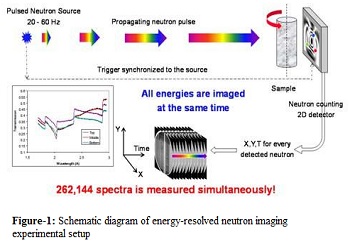
Bernd Hinrichsen
BASF SE, Germany
Title: Crystal structures of polymers: Will PDF paves the way to greater understanding?
Time : 12:00-12:20

Biography:
Bernd Hinrichsen has his scientific foundation in crystallography, having attained his PhD at the Max Planck Institute for Solid State Research under the supervision of Robert E. Dinnebier. He spent some time at Bruker AXS as an Application Scientist for powder X-ray diffraction before taking over the responsibility of the powder X-ray diffraction lab at the main research site of BASF in Ludwigshafen, Germany. He is currently responsible for PXRD, Solid-State, NMR, TEM and SEM labs.
Abstract:
Industrial polymers (plastics) are a fundamental part of modern society. The global production of polymers has been growing steadily from the tentative beginnings in the 1940s to 322 million tons in 2015. This immense and ubiquitous use of polymers has led to dramatic pollution issues and legislation curtailing use of environmentally detrimental polymers. Surprisingly little is known about the solid-state structure of these megaton products. Nuclear magnetic resonance studies elucidate the molecular structure in a liquid solution, transmission electron microscopy gives an inkling into the solid-state microstructure; however the chemistry involved in polymeric structures are only well characterized for a few examples by X-ray diffraction studies. Often these are performed on idealized samples, not necessarily representative of the real-life material. We will be presenting works that have been carried out and illustrate the potential which the PDF method brings to polymer research with special focus on challenging subjects such as bio-degradation.

Eiji Nishibori
University of Tsukuba, Japan
Title: Observation of π electron in metal hexaboride through X-ray charge density
Time : 12:20-12:40

Biography:
Eiji Nishibori is currently a Professor of Division of Physics, Faculty of Pure and Applied Sciences, University of Tsukuba, Japan. He has received his Bachelor's and Master’s degree from Nagoya University, Japan. He was appointed an Assistant and Associate Professor at Nagoya University. He was then appointed as the Director of RIGAKU-RIKEN collaboration center at SPring-8. His main research field is structural science using a synchrotron radiation X-ray including a development of experimental and analytical system. He has received several awards including Young Scientists' Prize, the Commendation for Science and Technology by the MEXT, the CrSJ Young Scientist Award and the Crystallographic Society of Japan.
Abstract:
Metal hexaborides MB6, where M is an alkaline earth or rare earth metal exhibit metallic and semiconductor properties by changing the M ion. The metal hexaborides have a B6 octahedron in the structure. The M ion is located at the body-center surrounded by the B6 octahedra. The B6 octahedron has 18 valence electrons. Two electrons per B6 octahedron are required to fulfill the bonding orbital of B6. Metal hexaborides with divalent metal ions are considered to be semiconductor and with the trivalent ions are metal from the consideration. Theoretical study suggests that the p-electron like an anti-bonding orbital of B6 contributes electrical conductivity in the metallic trivalent MB6. We investigated the charge densities of divalent and trivalent metal hexaborides, semiconducting BaB6 and metallic LaB6 using the d>0.22 Å ultra-high resolution synchrotron radiation X-ray diffraction data by a multipole refinement and a maximum entropy method. High resolution powder diffraction data were measured at SPring-8. The strong inter-octahedral and relatively weak intra-octahedral boron-boron bonds were observed in the charge densities. A difference of valence charge densities between LaB6 and BaB6 was calculated to reveal a small difference between isostructural metal and semiconductor. The weak electron lobes distributed around the inter B6 octahedral bond were observed in the difference density. We found the electron lobes are the conductive p electrons in LaB6 from the comparison with the theoretical charge density. We have successfully visualized very small amount of conductive p electrons from X-ray charge density. Electron density distribution is now one of the most information-rich observable owing to the great improvement of experimental situation such as synchrotron X-ray source.
Franck Artzner
Rennes University, France
Title: Atomic view of the histidine environment stabilizing higher-pH conformations of pH-dependent proteins
Time : 12:40-13:00

Biography:
Franck Artzner’s bio-inspired self-assemblies group addresses materials issues from fibrillation of pharmaceutical peptides to the colloids crystallization by fibrillar proteins. The group has an expertise in technical development as well as crystallographic characterization of structures by unconventional X-ray scattering techniques, SAXS, Fiber Diffraction. A Joint Laboratory with IPSEN and Maïté Paternostre is headed by Franck Artzner and investigates commercial formulation of self-assembled peptides. FA was the chairman of the National brain storming group on Bio-inspired Nanotechnologies at OMNT. He is involved in the review committees of synchrotons : SOLEIL, ESRF, NSLS I. He received the Young Investigator Award of the Physical Chemistry Division of the French Chemical Society (SFC) and the French Physical Society (SFP) in 2015, and the Delalande prize from the French Pharmaceutical academy in 2016
Abstract:
External stimuli are powerful tools that naturally control protein assemblies and functions. For example, during viral entry and exit changes in pH are known to trigger large protein conformational changes. However, the molecular features stabilizing the higher pH structures remain unclear. Here we elucidate the conformational change of a self-assembling peptide that forms either small or large nanotubes dependent on the pH. The sub-angstrom high-pH peptide structure reveals a globular conformation stabilized through a strong histidine-serine H-bond and a tight histidine-aromatic packing. Lowering the pH induces histidine protonation, disrupts these interactions and triggers a large change to an extended β-sheet-based conformation. Re-visiting available structures of proteins with pH-dependent conformations reveals both histidine-containing aromatic pockets and histidine-serine proximity as key motifs in higher pH structures. The mechanism discovered in this study may thus be generally used by pH-dependent proteins and opens new prospects in the field of nanomaterials. This work is based on three complementary x-ray techniques: Single crystal solving at 0.85 Å, Fiber diffraction at wide angles that gives insight into the molecular structures, and, SAXS, Small Angle X-ray Scattering that illuminates the packing and the radial electron density profiles of the nanotubes. The full x-ray analysis that reveals both nanostructures at the molecular scale will be detailed.

Eric J Chan
Bristol Myers Squibb, USA
Title: On the application of molecular simulation tools in studies of organic molecular crystals. (i.e. Modelling disorder and other crystalline properties)
Time : 13:50-14:10
Biography:
Eric J Chan has completed his graduate studies in Organic Chemistry/Biochemistry, PhD in coordination chemistry of metal-organic complexes and chemical crystallography and Post-doctoral study in X-ray single crystal diffuse scattering interpretations, molecular models, and Monte Carlo methods for molecular simulation, solid state organic chemistry and analysis of organic solids. He has expertise in crystallography, solid-state or materials chemistry and molecular simulations. He has interest in computational physics approaches used in chemistry. Graduate in organic chemistry/biochemistry, PhD: coordination chemistry of metal-organic complexes and chemical crystallography.
Abstract:
Analysis and prediction of physical properties of crystalline materials is of crucial importance. For example, a pharmaceutical crystal form must satisfy a target profile with respect to process-ability as well as bioavailability. In the material development arena, undesirable physical phenomena offer non-trivial challenges. Such phenomena include polymorphism, disorder, solvation/de-solvation, disproportionation and variation in the crystal particle size shape; because these phenomena impact the physical structure and related properties of a material, challenges also exist analytical and characterization perspective. Nowadays varieties of atomistic simulation techniques are useful to support analysis, provide further chemical/physical insight and for risk assessment/predictive capabilities. The once active laboratory chemical crystallographer may be forced to seek refuge in silico. Such computational activities are facilitated by a plethora of commercial and community software tools and codes. However, in some cases workflows and tools are not as streamlined and options are limited, the former experimentalist then takes the role of a computer scientist. We discuss a selection of case studies where such former mentioned novel molecular simulation hackwork is applied to small molecule crystallography, the majority being pharmaceutically relevant. Example workflows include atomistic simulation methods (MC or MD) useful for interpreting supplementary scattering features like diffuse and satellite intensities from single crystal X-ray diffraction. One study demonstrates insight into de-solvation processes. For understanding the interplay between different solvents within the crystal structure, a Grand Canonical Monte Carlo (GCMC) model was developed combining crystal structure, molecular mechanics models and SSNMR data. This was useful to estimate site occupation parameters for solvent bound to a crystal. We argue the supplementary knowledge of molecular level interactions provides a simple means for prediction of the corresponding thermodynamic properties such as the solvent activities and temperatures required to remove or replace unwanted lattice solvent. Another example includes in silco screening for solvent effect on crystal morphology.
Fuyuki Ito
Shinshu University, Japan
Title: Visualization of evaporative crystallization dynamics probed by fluorescence colour changes
Time : 14:10-14:30

Biography:
Fuyuki Ito received his Ph.D. in 2004 from Tohoku University under the direction of Prof. Shozo Tero-Kubota. He worked as a postdoctoral fellow at Osaka University. He moved to Kyushu University in 2005 as a research associate. In 2009 he moved to Shinshu University and became an associate professor in 2010. His research interests photochemistry of molecular-assembly system and crystal formation process of organic molecules.
Abstract:
Crystal formation from a solution is necessary for the fabrication of organic solid material. In solution crystallization, the formation of crystal nuclei plays an important role in determining crystal structure, size and polymorphism, and their crystal quality. Recently, a two-step nucleation model was developed to explain protein crystallization; involving a liquid-like cluster intermediate before nucleation, which has been shown to be of more general validity. The two-step nucleation model replaces the classical model of crystallization that is molecules are added on one by one to extend the crystal lattice and form embryo clusters in a one step process. Liquid-clusters are believed to originate from disordered liquids or amorphous metastable clusters in homogeneous solutions. We have focused the fluorescence detection for crystal formation process. The fluorescence spectra of the materials are sensitive to molecular environment and aggregation. In principle, the evolution of the molecular assembly can be assessed by fluorescence spectroscopy on the scale of only a few molecules or a bulk process scale. We have investigated fluorescence spectral changes of perylene and cyanostilbene derivatives showing aggregation-induced emission during solvent evaporation by fluorescence microscopy. We have claimed that the information on molecular assembly and crystal nucleation and growth processes is obtained by studying the concentration-dependent fluorescence spectral change of organic fluorescent dyes in the polymer film and solvent evaporation. In this paper, we investigate the fluorescence properties of 4,4’-di-tert-butyldibenzoylmethane boron difluoride (BF2DBMb) solutions during evaporative crystallization. BF2DBMb exhibits mechanofluorochromism, which originates from the different emission properties of its amorphous and crystalline states.

Huifang Xu
University of Wisconsin–Madison, USA
Title: Understanding interface and surface structures of Nano-phases in natural Fe-oxyhydroxide and Fe-bearing olivine minerals
Time : 14:30-14:50

Biography:
Huifang Xu has received his Bachelor’s degree from Nanjing University and PhD degree from The John’s Hopkins University in field of Mineralogy and Crystallography. He has completed his Postdoctoral studies at Arizona State University in area of Electron Crystallography. He is a Faculty Member in the Department of Geoscience and Materials Science Program at the University of Wisconsin-Madison. His research interests are studies of incommensurately modulated structures and nano-phase structures using e-beam imaging, X-ray diffraction and neutron scattering methods. He has published more than 100 papers in fields of mineralogy, crystallography and inorganic materials. He is an elected Fellow of Mineralogical Society of America.
Abstract:
Understanding interface structures, nano-precipitates, vacancies, impurities and adsorbed atoms on mineral surfaces are important to elucidate formation mechanism and reactions of minerals in the earth environments. Aberration-corrected Z-contrast imaging can provide chemical images with sub-Å resolution. Z-contrast images are HAADF images with atomic resolution. Multiple diffraction effects that appear in high-resolution transmission electron microscopic (HRTEM) images can be eliminated or minimized in Z-contrast images, because Z-contrast imaging uses non-coherent elastically scattered electrons at high scattering angle. We can obtain positions of atoms directly over a large range of thickness with Z-contrast to help distinguish columns of different atoms and their occupancies along the beam direction. Interface structures and crystal structures of nano-minerals and nano-precipitates can be solved by combining the Z-contrast imaging and ab initio calculation using density functional theory (DFT) methods. Vacancies, impurities, adsorbed heavy atoms can be also revealed directly. Vacancy ordering in Fe-bearing olivine and Fe-sulfides, adsorbed heavy metals (e.g., As, Au, U) on Fe-oxyhydroxide minerals are resolved clearly. Z-contrast images of the Fe-oxyhydroxides show ordered FeOOH proto-goethite nano-domains intergrown with nanophase goethite. The FeOOH nanophase is a precursor to the goethite. DFT calculations indicate that goethite is more stable than proto-goethite. Our results suggest that ordering between Fe and vacancies in octahedral sites result in the transformation from feroxyhyte to goethite through a proto-goethite intermediate phase. Combining Z-contrast images and TEM-EDS reveals that arsenate (AsO43-) tetrahedra are preferentially adsorbed on the proto-goethite (001) surface.
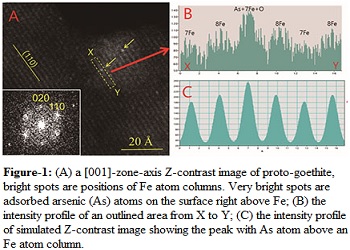
J. Rouquette
University of Montpellier, France
Title: Interplay between H-bonding and charge ordering in Fe3 (PO4)2(OH)2 barbosalite
Time : 14:50-15:10

Biography:
J Rouquette has obtained his PhD in Julien Haines’ group in Materials Science (Condensed Matter) from University of Montpellier, France in 2004 and was a Postdoctoral Fellow in Leonid Dubrovinsky’s group at the Bayerisches Geoinstitut in Bayreuth University, Germany for two years. He has joined the CNRS as a Researcher in 2004 in the field of ferroelectrics/multiferroics and he defended his Habilitation in 2012 entitled “insitu structural studies of ferroic materials as a function of P,T,E,B. He has published more than 50 research papers in these areas.
Abstract:
Charge Ordering (CO) in transition metal oxides is an important parameter for obtaining original magnetic and/or electric properties. That was largely shown within the framework of the studies on colossal magneto-resistance in manganese perovskites and it again seems to be at the origin of the ferroelectricity in CaMn7O12 or LuFe2O4. The mixed valence of iron in the system is a particular motivation in view of the long lasting research on the understanding of the effects of pressure on charge order/magnetic order in iron compounds such as the LuFe2O4 new charge ordered state and the pressure dependence of its magnetic order. Here we focus on Fe2+Fe3+2(PO4)2(OH)2 barbosalite single crystal, an hydroxyphosphate of iron which exhibits a mixed valence state. High pressure behavior of barbosalite was successfully characterized based on single crystal X-ray diffraction, Raman and infrared spectroscopies. Fe2+Fe3+2(PO4)2(OH)2 presents two phase transition at close to 3 and 8 GPa respectively which are clearly governed by an interplay between H-bonding and electron delocalization. Moreover the temperature reaction Fe2+Fe3+2(PO4)2(OH)2Ò Fe3+3(PO4)2(OOH).
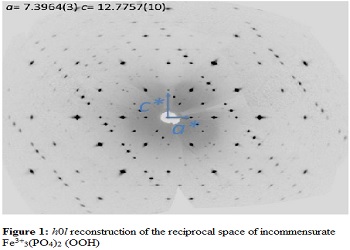
Kamal Choudhary
NIST, USA
Title: Applications of crystallography data in force-field and density functional theory calculations: JARVIS database
Time : 15:10-15:30

Biography:
Kamal Choudhary has expertise in molecular dynamics, density functional theory and machine-learning based calculations. He has built JARVIS database at NIST to enable users access classical and quantum mechanical data of material free of cost to enable future materials discovery. He was graduated with PhD in Materials Science and Engineering from University of Florida in 2015 under the guidance of Dr. Susan B Sinnott.
Abstract:
Crystal structure information can be used to characterize material-properties using quantum density functional theory and classical force-field calculations. JARVIS database is a part of Materials Genome Initiative at National Institute of Standards and Technology (NIST) enabling users to access material property calculation data through easy web-interface. JARVIS-FF database currently consists of 3248 entries including energetics and elastic property calculations and it is still increasing. We also include computational tools for convex-hull plots for DFT and FF calculations. The data covers 1471 materials and 116 force-fields. A major feature of this database is that the web interface offers easy look up tables to compare at a glance the results from different potentials (for the same system). In addition, both the complete database and the software coding used in the process have been released for public use online. JARVI-DFT database consists of more than 5000 DFT calculations for three-dimensional (3D) bulk and single layer 2D materials data for structural, electronic and elastic properties. We use lattice-constant criteria to identify potentially novel 2D materials. We predicted at least 1485 2D materials based on relative error in lattice constants obtained from semi-local DFT and Inorganic Crystal Structure Database (ICSD) data. We calculate exfoliation energy as a verification of our lattice-constant criteria.

Koji Ohara
JASRI/SPring-8, Japan
Title: Structural study of sulfide glassy electrolytes for all-solid-state batteries
Time : 15:30-15:50

Biography:
Koji Ohara has received his PhD in Condensed Matter Chemistry and Physics from Kyushu University of Japan, working with Prof. S. Takeda. He then did his Post-doctoral research with S. Kohara at Japan Synchrotron Radiation Research Institute (JASRI), where he studied elemental specific pair distribution function (PDF) analysis using anomalous X-ray scattering for disordered materials. After two years at JASRI, he moved to the position of Research Assistant Professor at Office of Society-Academia Collaboration for Innovation of Kyoto University in 2012. He has worked on structural studies of electrolytes in lithium ion batteries. He has been working as a Researcher at JASRI since 2015.
Abstract:
Sulfide glass ceramics are of interest for use as solid electrolytes in lithium ion batteries, because the realization of an all-solid-state battery will enable the miniaturization of battery packages and reduce safety issues. In general, the crystallization of glassy materials results in a decrease in the conductivity, although it increases in a few sulfide glasses owing to the crystallization of a highly conductive new phase. Significant progress has been made so far with the discovery of numerous sulfide crystalline compounds with high ionic conductivities such as Li7P3S11, Li10GeP2S12, Li7P2S8I and Li10SnP2S. Their conductivities are higher than those of the corresponding sulfide glasses. Recently, we reported that 75Li2S-25P2S5 glass in the binary Li2S-P2S5 system with strongly polarized sulfur has high ionic conductivity. In the sulfide glasses as presented here, an interesting improvement in the conductivity is observed during annealing, which appears in the glassy phase. In this presentation, we report the local glassy structure with a mixture of glass and crystalline phases by using synchrotron X-ray pair distribution function (PDF) analysis. The differential pair distribution function is utilized as a methodology for the mixed materials in our work to extract the glassy structure in the 75Li2S-25P2S5 sulfide glass ceramic. This method quantitatively reproduced the fraction of mixed phases, which was in agreement with the result of NMR. The extracted glassy structure exhibited no changes during the annealing treatment. Owing to the crystallization of the majority phase, the ionic conductivity in this glass decreased after crystallization. We observed the formation of a nanocrystalline phase in the diffraction pattern obtained during the annealing. Thus, our present finding of minority component is expected to lead to further understanding for the development of solid electrolytes with high ionic conductivity.
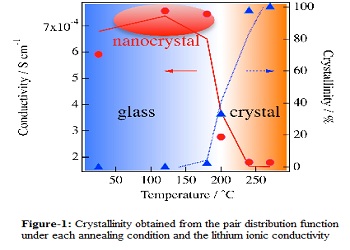
- Speakers Session 2: Advanced Crystallography | Crystallography in Biology |Chemical Crystallography|Crystal Growth
Location: Conference Hall: Zurich

Chair
Rama S Madhurapantula
Illinois Institute of Technology, USA
Session Introduction
Michal Lahav
Weizmann Institute of Science, Israel
Title: Designing chiral metal-organic assemblies
Time : 16:10-16:30

Biography:
Michal Lahav has completed her BSc and PhD studies in Chemistry from the Hebrew University of Jerusalem, Israel. She was a Postdoctoral Researcher at the Weizmann Institute of Science for two years before she moved to Harvard University, where she studied nanochemistry. After two years of postdoctoral work in the United States, she returned to Israel and started to work as a Scientific Advisor at the Weizmann Institute of Science. She was appointed as an Associate Staff Scientist in the Department of Organic Chemistry in 2011. Her interdisciplinary materials chemistry research is related to the self-assembly of metallo-organic materials for energy storage and for electrochromics whose products are now being patented. Her work is related to fundamental understanding of the formation and electronic properties of these metallo-supramolecular architectures. Her prizes and honors include the Dr. Maxine Singer Prize for Outstanding Staff Scientists.
Abstract:
Coordination-based polymers and metal-organic frameworks (MOFs) have been explored since their serendipity discovery by a Berlin color-maker named Diesbach at the beginning of the 18th century. These intriguing materials combine metal-coordination chemistry with the often complex formation of large supramolecular structures and may exhibit optical, catalytic, redox and magnetic functions derived from their metallic elements. Such materials are currently generated by the dozens in a gold-rush-type search for unique properties mainly related to the storage and release of energy (e.g., hydrocarbons, dihydrogen) at ambient temperatures and pressures. How the molecular components, metal salts and experimental conditions control the dimensions, shapes and homogeneity of these coordination-based materials is barely known. Moreover, the formation of chiral MOFs and MOFs confined on surfaces is especially challenging. We demonstrated the controlled generation of various homogeneous MOF structures from solution and on surfaces. Using a versatile ligand system that binds late-transition metals in a defined manner, we address various challenging issues related to the mechanism underlying the formation of such homogeneous structures at the (sub)-microscale, their magnetic and electronic properties and other functions. These new chiral materials have been characterized by a series of complementary methods, including electron microscopy, X-ray powder diffraction, atomic force microscopy and synchrotron X-ray reflectivity.

Milko E. van der Boom
Weizmann Institute of Science, Israel
Title: Old forces to create new materials
Time : 16:30-16:50

Biography:
Milko E van der Boom has completed his BSc in Chemical Engineering at the Amsterdam University of Applied Sciences and his MSc degree in Inorganic Chemistry at the University of Amsterdam. In 1994, he was enrolled as a Doctoral student at the Weizmann Institute of Science, where he studied Organometallic Chemistry and was awarded his PhD degree with distinction in 1999. After three years of Postdoctoral work at Northwestern University, where he studied the formation of functional organic films, he returned to the Weizmann Institute’s Department of Organic Chemistry in 2002. His interdisciplinary materials chemistry research focuses on metalloorganic-oriented synthetic and mechanistic studies. His prizes and honors include an Alon Fellowship from the Israel Council for Higher Education
Abstract:
Enabling and understanding new methodologies to fabricate molecular assemblies driven by intermolecular interactions is fundamental in chemistry. Such forces can be used to control crystal growth and enable surface-confinement of these materials, which remains challenging. In the 1960s, the late Gerhard M. J. Schmidt from the Weizmann Institute of Science discovered that some molecules are unusually closely arranged in organic crystals. This spatial arrangement turned out to be a result of an unexplored weak intermolecular interaction, termed “halogen bonding” many years later by other scientists. Such interactions play a key role in organic processes (in a cell or organism) that are necessary for sustaining life. For example, thyroid hormones use halogen bonding to bind to receptors in order to regulate the development, growth and metabolism of the cells in our body. We demonstrate a solvent-free on-surface crystal-to-co-crystal conversion process driven by halogen bonding (XB). By exposing a polycrystalline organic material, consisting of a XB-acceptor moiety, to the vapors of a complementary XB-donor compound, the corresponding halogen-bonded co-crystals were formed. Furthermore, we show that this approach can also be utilized for non-crystalline materials to afford surface-confined organic composites. Our stepwise vapor-based approach offers a new strategy for the formation of hybrid supramolecular materials.
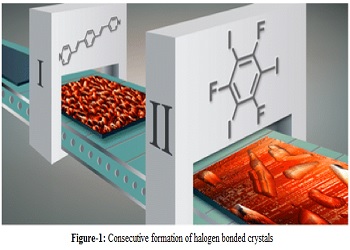
Rocio Jauregui
National Autonomous University of Mexico, Mexico
Title: Nonlinear crystallography with structured light: Classical and quantum optics effects
Time : 16:50-17:10

Biography:
Rocío Jáuregui performed her graduate and postgraduate studies at the Universidad Nacional Autónoma de México. (UNAM). She has worked on the interaction of light and matter from diverse points of view: high precision atomic spectroscopy, effects of boundary conditions on the electromagnetic field, pair creation and modification on atomic transition rates due to moving boundaries, classical and quantum description of structured electromagnetic fields and their effect on thermal and ultracold atomic samples, simulations of ultracold bosonic and fermionic atoms, and the analysis of quantum nonlinear optical response of different media. Her work has been supplemented by teaching activities. Nowadays, Prof. Jáuregui coordinates the Laboratorio Nacional de Materia Cuántica which incorporates 11 Mexican research institutions and chairs the Department of Quantum Physics and Fotonics of Instituto de Física (UNAM)
Abstract:
An alternative to diffraction techniques is the characterization of the point symmetry group of a crystal by its effects on the nonlinear optical response encoded in the susceptibility tensors. In this work, we show that it is possible to perform complementary symmetry studies of nonlinear materials by using nonlinear processes besides second harmonic generation 1. We also show that structured light can enhance the tracks of the symmetry of a crystal on its nonlinear optical properties2,3 . We focus on the usage of light beams that can be described as the superposition of plane waves with wave vectors confined in a cone and with cylindrical symmetry on the angular spectrum (Bessel beams). This is equivalent to observing the crystal simultaneously from many different angles. The polarization structure of these beams out of the paraxial regime allows to incorporate information from all the components of the susceptibility tensors using a single structured illumination beam. The crystallographic analysis is exemplified for the parametric down conversion process4 . It is shown that, for an uniaxial birefringent nonlinear crystals, a proper orientation of a non paraxial Bessel beam induces the emission of photon pairs in directions that reflect directly the point symmetry. Both the flux rate of signal photons (with a clear classical analog) and coincidence detections (with a pure quantum interpretation) exhibit traces of the crystal symmetries.
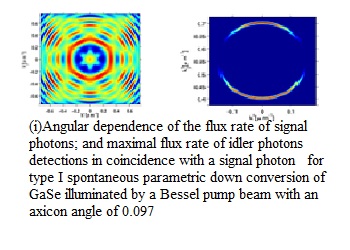
Seok-min Kim
Chung-Ang University, Republic of Korea
Title: Fabrication of single crystal silicon nanowires by metal assisted chemical etching with Nano imprinted barrier pattern
Time : 17:10-17:30

Biography:
Seok-min Kim received his PhD degree from the School of Mechanical Engineering at Yonsei University, Seoul, Republic of Korea. He is currently an associate professor in the School of Mechanical Engineering at Chung-Ang University, Seoul. His current research interests include design and fabrication of micro/nanostructures for optical component, gas/bio sensors, micro fluidic chips, and enhanced boiling heat transfer surface.
Abstract:
To fabricate the silicon nanowires, various methods such as vapor-liquid-solid growth, reactive ion etching with barrier pattern, oblique angle deposition and metal assisted chemical etching (MACE) have been developed. The MACE can provides a high aspect ratio and undamaged single crystal silicon nanostructures using low-cost wet etching process. In the MACE process, a patterned noble metallic structure etches the silicon substrate anisotropically in aqueous solutions containing hydrogen fluoride and an oxidant, and an isolated single crystal vertical silicon nanowires are obtained. Since the geometrical structure of silicon nanowire is mainly determined by the initial metallic pattern, the fabrication of metallic nanostructure on a silicon substrate is the key technology in the MACE process. To obtain highly ordered nanowires with precisely controlled diameter and distribution, the various metal patterning method such as electron beam lithography, photolithography and nanosphere lithography were suggested. In this study, we fabricated a highly ordered large area ultraviolet (UV) nanoimprinted etch barrier pattern on an Au catalyst layer with low cost for MACE process. A silicon nanodot master having 500nm pith, 250nm diameter and 125nm height was prepared by KrF laser scanning lithography. A transparent flexible mold was UV replicated from the silicon master, and a nanodot barrier pattern was UV imprinted on a PMMA lift-off layer coated silicon wafer. After RIE process with O2 gas, the silicon surface was exposed except nanodot barrier patterned area. An Au layer was deposited on silicon wafer using thermal evaporator and UV imprinted nanodot barrier were lift-offed with PMMA layer in acetone solution with ultrasonication process. Finally, Au nanohole array was fabricated and MACEed in hydro fluoride and hydrogen peroxide mixed aqueous solution. Depending on the etching time, 300 – 8000 nm heights silicon nanowire arrays were successfully demonstrated.
This study was supported by a grant of the Korean Health Technology R&D Project, Ministry of Health & Welfare, Republic of Korea. (HI14C2687), and the Technology Transfer Development Program (S2334634) funded by the Small and Medium Business Administration(SMBA, Korea).

Feng Zhang
Ames Laboratory US Department of Energy, USA
Title: ‘Crystal genes’ in metallic liquids and glasses
Time : 17:30-17:50

Biography:
Feng Zhang is an Assistant Scientist III at the Ames Laboratory, US DOE. He received his Ph.D. in physics from Penn State University in 2008, and held a postdoctoral fellow position at Georgia Institute of Technology before joining Ames Lab. His current research interest lies in the structure and dynamics of metallic liquids and glasses, and phase selection during transformations into crystalline structures.
Abstract:
It has been widely speculated that dominant motifs, such as short-range icosahedral order can influence glass formation. Less well understood is how these motifs (crystal genes) in the liquid can influence phase selection upon devitrification. These ‘crystal genes’ are the underlying structural order that transcends liquid, glass and crystalline states. By comparing the amorphous states of the same alloy compositions formed by sputtering and rapid solidification, and their devitrification pathways, we can quantify the distribution of the common packing motifs in the liquid or glass and in stable and metastable phases which form. We will discuss how this approach brings new insight into the origin of vitrification and mesoscopic order-disorder transitions in condensed matter. A genetic algorithm is applied to search for the energetically favorable stable and metastable crystal structures of complex metallic compounds, and a cluster alignment method reveals the most common packing motifs in crystalline and non-crystalline structures.

Sun Jialin
Nanyang Technological University, Singapore
Title: Structural and functional studies of actin interacting protein 5, a novel actin assembly regulator in Saccharomyces cerevisiae
Time : 17:50-18:00

Biography:
Sun Jialin is currently a PhD student majoring in Structural Biology from Agency for Science, Technology and Research and Nanyang Technological University in Singapore. She had a Diploma in Pharmacy Science and found her passion in structural biology later during her undergraduate study. Her focus of work mainly revolves around the structural and functional studies of plant enzymes and actin interacting proteins in yeast. She has expertise in molecular cloning, and as well as X-ray crystallography
Abstract:
Aip5 is a newly identified member of the polarisome complex found in yeast. It acts as actin assembly regulator via binding to other protein partners in the polarisome complex. Polarisome complex helps to establish the polarity of the cell, which is critical for cell growth and division. It is also responsible for actin filament assembly in the cell that contributes to the tissue organization and cell motility. All in all, polarisome is crucial for the survival and division of a yeast cell. Being a new member of the polarisome complex, Aip5 is most likely recruited by its binding partner Spa2 to the tip of the yeast bud during polarized cell growth, to regulate actin filament assembly. Deletion of Spa2 led to the complete loss of localization signal of Aip5 to the polarized region in the cell, while deletion of Aip5 C-terminal had similar effect. These results indicate that Aip5, most probably interact with other polarisome proteins via its C-terminal. Thus it is critical to elucidate the structure of Aip5 given its importance in aiding the actin filament assembly. In this study, we have successfully solved the structure of Aip5 C-terminal at atomic resolution of 1.8 Å. It consists of a dimer per asymmetrical unit, which is consistent with the gel filtration chromatography result. This indicates that Aip5 possibly functions as a biological dimer as well. Preliminary results have shown that the oligomer state of Aip5 might play a part in actin filament assembly. More studies will be conducted to further investigate on the effect of Aip5 oligomer state with to its function
